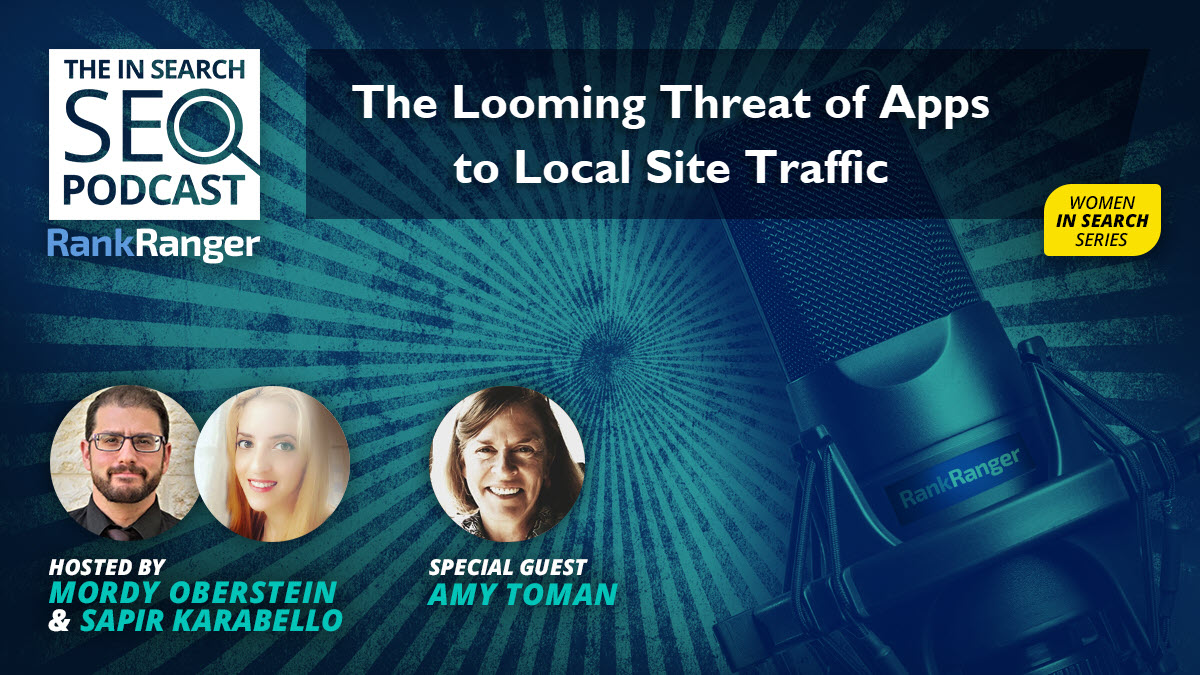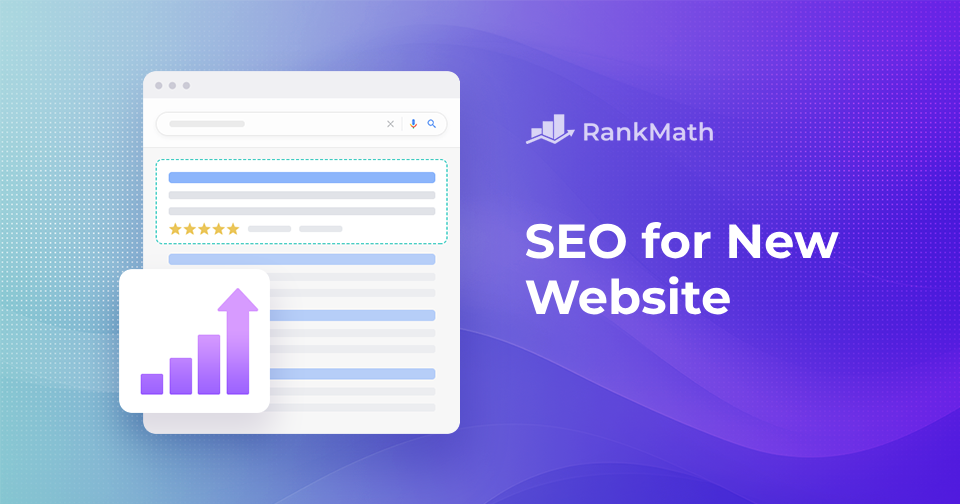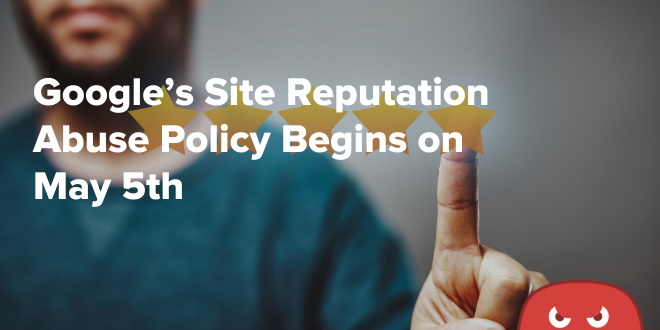
Posted by
The In Search SEO Podcast
Don’t forget, you can keep up with the In Search SEO Podcast by subscribing on iTunes or by following the podcast on SoundCloud!
How Local Sites Can Deal with Apps Siphoning Search Traffic: Summary of Episode 63

[This is a general summary of the podcast and not a word for word transcript.]
Amy Toman is here to chat about apps stealing your local traffic away!
- What threat do on-demand apps pose to local search traffic?
- Which niches are most susceptible to losing local traffic to apps?
- How can local businesses recapture traffic lost to apps?
Plus, we dive into how rank tracking has changed and how you might want to reconsider how you monitor your rankings.
Featuring:
Mordy Oberstein (Host)
Sapir Karabello (Co-Host)
Amy Toman (Special Guest)
Resources:
How Low Can #1 Go? (2020 Edition)
Google’s Response to Moz Article Critical of SERPs
How to Track Rank – Best Practices [04:30 – 15:40]
A few weeks ago, Dr. Pete over at Moz wrote an article comparing how far down the page organic results now appear on the SERP compared to a few years back… and the SEO world lost its collective mind.
Interestingly, Danny Sullivan on Google chimed in on the study saying that the features pushing results down such as the Video Carousel and News Box, etc. are organic. That doesn’t sound right as not every site can get into a News Box, for example. More than that, a user clicking on a YouTube video is not the same thing as a user going to your site. On your site, you control the narrative and you can push the funnel how you want to.
As a result of this debate, rank tracking made its way back into the conversation. There were all sorts of chatter about its role and nuance. One of the things Mordy heard was that maybe pixel position should be more important than ranking position. In Mordy’s mind, while that sounds intriguing it can get really complicated really quickly (though it does go to show the importance of our above the fold rank tracking). However, according to Mordy, even “above the fold” is a metric that we might be getting too hung up on.
Put it this way, even if you track above the fold, it doesn’t matter if you don’t understand the rankings. You have to qualify rank whether it’s position per se, pixels, or above the fold identification. Whatever you choose, you have to qualify your rank.
What does that mean? If you rank above the fold for a keyword, you also need to know what other features are up there with you. And that’s only half the battle. You have to qualify what those features mean. For example, there could be an Image Box at the top of the SERP, but that doesn’t mean there’s much of an image intent. So while the SERP is applicable to images, it doesn’t mean images are the strongest intent on the page.
Or take a video carousel that’s up there with your organic result. That’s problematic, right? Most likely, but what videos are in the carousel and who do those videos speak to? Maybe Google is doing a bad job of showing the right videos for the right query. You have to qualify the page. That’s how you qualify your rankings and there is no substitute for looking at the SERP itself. (Which is why we have the SERP Snapshot that lets you see the SERP from our UI! Hey, when we’re talking rank tracking, you can’t expect us not to plug Rank Ranger a bit!)
By the way, SERP features are just one way to qualify your rank. Another way would be volatility. How stable or how consistent are your rankings? Again, it’s about qualifying your rank position.
Most of all… you should qualify the other sites on the SERP you’re competing with. Just because a site ranks above you doesn’t mean they’re “beating you.”
You might be in position #3 or #4, but Google could be:
- Showing results geared towards another intent above you, in which case for the intent you cater to you’re really at #1. No one thinks about it like that, but if you’re the first result on the page to satisfy a specific intent, even if numerically you’re not in the first position, in a certain way you are in the top position.
- Google could be showing crap above you (it happens) as the results above you are not hitting on what the user wants. And until Google gets it right, while those top results technically are outranking you, they are not applicable to the user.
In a nutshell, qualify your rankings as no metrics can substitute.
The Impact of Apps on Local Site Traffic: A Conversation with Amy Toman [16:09 – 55:20]
Mordy: Welcome to another In Search SEO Podcast interview session. Today we have with us one of the most active folks within the local SEO world. She’s a Google Local Guide and is also the SEO analyst at Digital Law Marketing. She is Amy Toman.
Welcome!
Amy: Hey, Mordy, how are you?
M: I’m good. Thanks so much for coming on. First off, you’re a New Yorker who now lives in New Jersey. Isn’t that a contradiction of terms?
A: Well, I have unfortunately got so used to living down by the Jersey Shore and being five minutes from the ocean that I now can’t stand driving in the city. I’m originally from Brooklyn. We absolutely **** where we are now, we have a little bit more room and it’s a little less stressful.
M: Jersey is nice. It’s called the Garden State for a reason.
So today we’re going to be talking about warding off app-based local competition. But before we do that, I just want to ask you, how did you get into the SEO industry and where are you now?
A: I have been online for a really long time. I remember first working and sending emails from about 1987. I worked at Citibank for about five years, I worked at Bell Labs in Holmdel, New Jersey, I was offline for a while and when I came back I was working for a website and hosting platform, I left there and formed my own company called Pet Sitter SEO, and then I was lucky enough to move on to a couple more gigs. Now, I’m an SEO analyst for Digital Law Marketing and I really **** it. I have a great team, I learn a lot, and it’s really interesting.
M: Awesome, so let’s just dive right into it. First off, we’re talking on-demand, app-based, local competition. Before we really jump into it all, can you explain to anyone who may not be familiar with the concept… what is an on-demand app?
A: On-demand apps that I know about are apps like Uber, Lyft, Wag, and Rover. These are apps where instead of calling a local company you just have the app on your phone do it for you, like saying, “I need somebody to walk my now.”
M: So the service is on-demand?
A: That’s right.
M: And you say that these pose a threat to local businesses trying to gain organic traffic and produce organic visibility. How are these apps a threat?
A: These apps are being very intrusive to the market, for example, with taxi drivers in New York City. I’ve gotten a lot of feedback from those in the pet sitting industry and walkers and what I hear is that a lot of times these apps allow people who don’t have enough time to do research to just have somebody come to their home and provide a service. The problem is these apps are undercutting the competition. You’ll pay on the app about $20 for something that a professional pet sitter has to charge $25 for. They have to charge more because they’re bonded, they’re insured, they’re trained, they’re paying taxes, they’re not independent contractors, they’re registered with the state, and they often have to pay rent for their business. None of these people who work for the apps as independent contractors have these expenses. And who’s kidding who? It’s easier to have an app on your phone, press a button, and get the service.
The problem is these professionals often have nothing other than a **** of whatever the service is. And some of these pet sitters have been doing this for 10, 15, or 20 years. I used a pet sitter recently for a week when we were away. This woman has not only been doing it a long time, but she told me stories about getting to pets during hurricanes, when power was out, or when people were unable to return to their homes and I don’t see that happening with independent contractors.
M: It’s interesting. It’s almost like the spammy results you get in a Local Pack or on the local SERP, but they’re in app form.
A: Exactly.
M: And I’m assuming it expands to more than just the pet industry. I’m sure there are a gazillion other industries that I have no idea about.
A: Yes, because I would assume that it would expand to things like taxi fleets, things like that in New York.
M: For those who are not familiar with New York City, if you want to be a yellow taxi cab, you have to have something called a medallion. It’s literally a medallion that goes onto the hood of the car. There is a limited number of them because New York City didn’t want the whole city inundated any more than it already is with yellow taxi cabs. So because of the limited number of medallions and the laws of supply and demand, the price for a medallion used to be up to a half a million dollars. You would have to take out basically a mortgage to get your medallion. The problem started when apps like Uber came along and the price for the medallion has gone down tremendously. Now you have people who are stuck. They bought the medallion, they’re not making enough money to cover the monthly loan, and they can’t sell it because the price of the medallion has gone down. Taxi cabs are a great example of how on-demand apps have basically killed or greatly reduced a local service industry.
A: Exactly. You start hearing about people who became reasonably wealthy by leasing medallions and now they’re selling everything they have there because they’re underwater.
M: Yeah, it’s terrible. Economically, I don’t know if you would describe this as a good thing or a bad thing but on the human side, it’s terrible.
I’m wondering how does SEO fit into all of this? How are you supposed to use SEO to combat something where people are using the app and are ignoring the SERP altogether?
A: Put it this way. What’s the old SEO line? It depends. I don’t know that there is a definite way to do it. My suggestions deal with actually going out into the community and doing some footwork as that should result in getting links back to your site.
To me, when people are looking for something, they often will look at the three-pack first so when they see somebody called Rover Sitter I think they’re more inclined to go to that person or listing. The problem being is because that person is an independent contractor, they shouldn’t even have that Google My Business listing to begin with.
One of the things I seriously advise is to make sure that you are going through those Google listings and do spam hunting. Those people should not be getting the visibility that you deserve. It should be a level playing field.
In terms of on-site SEO, you want to make sure you are optimizing everywhere possible for your location and for your services. If you have an app, there are some very good pet sitting companies out there that are not independent apps, but there are pet sitting companies that offer apps that you can basically white label out to your client.
M: That’s interesting. So basically, you’re saying that local businesses who are either expecting on-demand apps to hit their vertical or are already experiencing on-demand apps in their vertical should start thinking about ASO versus SEO to a certain extent. Are you saying that app search optimization and having an app all together could be a must for a local business?
A: If it’s available, as everybody says, it’s definitely worth a try. In a lot of these cases, what I’m finding with these more successful businesses is that they advertise on their home page or on a separate page saying, “Try our app.” And these apps are by companies that existed prior to app-based companies. They’re companies that primarily did things like scheduling or invoicing. Now they’re also offering an app. Sometimes it’s white-label, sometimes it’s not. But by being able to grab the app on your phone, you’re going directly to the pet owners who you have engaged. It really does help a lot of companies.
M: I think you’re right. I think local businesses should start thinking about apps more than they are as many are not. For example, I know the taxi industry in order to combat Uber has apps like Gett Taxi which is a popular taxi app in certain markets. As the old phrase goes, when in Rome…
There is something interesting you brought up. If you’re not going to be able to compete because the users are going straight to the app automatically where they’re not even seeing you on the SERP… that means you need to circumvent the SERP to a certain extent and think a little bit beyond SEO altogether, which is, of course, heresy, or think about SEO perhaps a little bit differently.
One of the things you brought up was links, and it just hit me as you were saying it. You mentioned going out and we spoke to Garrett French about local link building and he said the same exact thing. Go out and make real connections locally and build links that way. I’m wondering what you think about this. If I am a sitter, and the on-demand apps are killing me, maybe I should go talk to a groomer and ask to write a blog post for their website. Or we can create a partnership where we refer business to each other. This way if someone Googles grooming they’ll see my link on that grooming website and find me that way as opposed to directly doing the search related to my business.
A: Exactly. That is something that we’ve been recommending for quite a while. You want to do two things. You want to go out into the community, you want to get in touch with every regular and emergency vet. You want to have connections. Depending on the size of the area, you want to have connections with local law enforcement. You want to talk to anybody who would have any sort of tangential connection to a person’s home and to their pets. When I say that, a lot of times pet owners will have things like alarm systems so you want to talk to local alarm system companies. You want to have any connection you can by making personal contact with these companies. Ask them to make online connections with you to link to your system. And then you either write about something or have what’s called a Resources page where you write a little bit about the company and link out to them. This is definitely something that everybody should have on their site. I recommend this all the time.
The other aspect of it is that you want to link out to these companies, but you also want to make sure you’ve made one-on-one contacts with people who will then recommend you in social media circles. We have in my town, and I’m sure most areas or neighborhoods, a Facebook page for that area or a hashtag for Instagram. If someone needs ‘x’, even though it’s been asked 20 times in the past, people don’t use the search function, they just ask you. To have advocates in there is a big help. A local Chamber of Commerce would help. Sometimes people don’t they don’t think of the larger ones like the BBB. If you are a member of your local Chamber of Commerce, or a local networking area, to have them link to you as well or to have people in those groups refer you definitely helps. You want as many eyes coming on your site as possible especially if you can do it on a meet and greet sort of basis.
M: This is not very different from sites who have this problem altogether when people bypass them directly and go somewhere else. The same thing applies here. Links are one part of it and content is another part. If I’m a pet sitter, I can write a post on the best names. So now you’re doing something totally unrelated to sitting or grooming. You’re writing content that eventually people could say, “You know what? I remember reading a blog post with the greatest names for a and they were also a pet sitter. How about we just call them.”
A: That’s the other thing. We often have people doing blogs on things that are not necessarily too far afield. That’s good because you’re catching eyes, especially if you have a good title tag and meta description for it that Google doesn’t replace. That will definitely pull in eyes.
M: You should be careful though when you do that. Let’s say you’re a sitter and you’re talking about the best bars in your area. That has nothing to do with your website and writing about that will dilute what I call your core content profile, i.e., how Google understands what your site is. If Google comes to your site and sees that instead of talking about and pet-related things you’re talking about the best cocktails in your area, Google is going to wonder if they should trust you. So I would be very careful and strategic about how you do that.
A: Exactly. But we can pull this around again. There are two tangential things that can be pulled back into your topic. In my area, there is a very cool bar called The Wunderbar and they have a really great picture of Tillie, the famous icon from Asbury Park, and not only do they do fundraisers for pets but every weekend during the summer they have Yappy hours where they have an outdoor area and they invite owners to bring their pets.
M: So that’s perfect as that’s entirely related to what your site’s doing.
A: Exactly. And then you can ask for the link back.
The other thing I often tell people is to make sure you have location pages because most of these people are SABs, service area businesses, that don’t have a brick and mortar office location. A lot of them just come to your house, provide their service, lock your home, and leave. What often helps is to not only have a service area page, but you want to link out to the different towns that you service. So say you’re a plumber and you do everything within a certain county, it’s great to name the county but also to build on that by talking about the individual towns. That helps you show in search results.
Another thing to mention is personalized service. I’m not talking about reviews. Reviews are great and personalized service should be mentioned in the reviews because reviews are now searchable. But you also want to have any mention of things you do in the community. It gives that little push.
M: I would say that if you’re going to go after your on-demand app competition, if the on-demand app is a little bit sketchy and maybe a little bit cheaper, you’re going to have to offset that by marketing with quality. Let’s say you’re marketing on AdSense or social media, a TV spot or a billboard, whatever it is, because you know that someone else is going to be paying less for the same service through the app it would probably be a good idea to push the point that you are trusted, you are quality, you are experienced, and you have a lot of E-A-T (expertise, authoritativness, and trustworthiness). That would be something I would market to circumvent the idea of the on-demand app getting your business. So the user can use this on-demand app, but are they really as trustworthy as my next-door neighbor, Karen, someone I know who’s been doing this forever?
A: That’s an incredibly good point especially because you don’t hear a lot about experienced, individual pet sitters losing pets or having horrible things happen. What you will hear are app-based problems. You’ll hear about what happened in New York when a that ran away from the pet sitter and got run over. Then you hear about pets going missing. When I hear about pet sitters failing in some way or another these are app-based people and a lot of times it’s because these app-based people are not bonded and insured.
It’s the sort of thing that I’ve been pointing out to people. I do Facebook Live sometimes and I did one in December on E-A-T. You would not believe the number of people who have come to me and said, “What does this look like? How do I do it?” I even had one pet sitter who came to me and said she did it and had somebody contact her about writing a book and she did not think it was legit. She followed through and found out it was. Not only that, she asked how they found her. They said it was through her website and through her bio that she recently changed to have really good E-A-T. You should refer people to look at your experience. I’m not just a one-off. I’m not your neighbor who loves puppies. I’m your neighbor who’s taken all this training and who has links out to all the training that I’ve done. If you’ve written something, if you’ve been published somewhere, or if you’ve been on the news, putting all that in there means a lot to people. People don’t want a one-off pet sitter. They want somebody who’s knowledgeable.
M: One of the things I enjoy watching on YouTube is these Uber drivers who have cams in their car and they have all these crazy things that happen in the car. There is a certain sketchy association people have with things like Uber or Lyft. As opposed to a yellow taxi cab in New York City when you hop right in knowing they’re an official yellow cab with a number, the driver is being tracked by somebody who has a medallion, and the city knows about them. There’s some sort of larger accountability. Now I wonder if it’s only an amount of time before these on-demand apps like Uber and Lyft when they’ll get the same authority and credibility as a yellow cab in New York City. I have no idea. But as it is now, whatever the industry there’s a certain amount of skepticism when it comes to the on-demand app world and you can market yourself as someone not to be skeptical of rather you are super authoritative.
A: Part of the issue is that a lot of pet sitters are marketing themselves. They don’t have agencies, they don’t have high powered companies or high powered budgets. I think that is something that is not played up enough. You want to try to point out all the times that you did something out of the ordinary by going out of your way, something that you would not expect from an app. There’s a pet sitter near me where she has gone through blizzards to make sure that diabetic pets got their shots. I have heard of pet sitters who care for the elderly where the elderly put in their plans that if something happens to them that the pet sitter is called immediately to take care of their pets. These are not things that you hear from independent contractors. These are not stories that you hear from apps. Poster yourself that you know the neighborhood, you know pet what pet-friendly resources are out there, and that these pet parents are assured to be happy with your service.
Another side thing is that some pet sitters stay overnight in a person’s home and that is not something I would ever have an independent contractor do. That is something you want to make sure people know. You can have a page where you talk about overnight pet sitting, where you’ve been background checked by this company, that you were trained, you’re insured, and you don’t have to worry.
M: I want to ask you, I’m wondering if you could maybe speculate on how Google would handle something like this. You have to imagine that Google doesn’t want you to circumvent the results page to go to the app. In fact, Google has the Reserve with Google program. They want you to book and reserve through Google itself. How does Google deal with this? Can it deal with this?
A: That’s a really, really good question. First of all, I have yet to see that available to pet sitters.
M: In general, there are many industries that have Reserve with Google whether it’s yoga studios, guitar lessons, or restaurants who rely on this and maybe Google should be afraid.
A: The problem I think is that some of these industries need more than just one tool. For example, Google My Business messaging was great as the business owner would get the message immediately and could respond, but then Google deprecated it and if you hadn’t signed up, it didn’t work.
Now there is another one with ‘Get a quote.’ The problem is a pet sitter does not necessarily do the eight different things that are in those fields. So in as much as it’s nice to be mentioned in there, it also doesn’t help you.
In as much as I know that Google wants to have these businesses use these things, I think they have to have a more full-bodied tool to get them there. The question is if you want to disappoint the client every single time somebody is asking you for service you don’t have and that you can’t remove or do you just take it off and not disappoint people. I think that in as much as Google may want people to use these tools, the tools are not yet fully-featured enough to have broad adoption especially for companies that are ultra-small.
I know I’m famous for asking for more specific categories in Google My Business listings. I know that on the one hand, it may seem annoying, but on the other hand, if the categories were more specific, if they were more specific within an industry, I think that would also help with the development of those fields in ‘Get a quote.’ Right now there are about 20 categories in the pet industry, but not all of those apply to every single sitter. Again, they’ll get to it, they’re just not where they need to be. As they develop, hopefully, other industries and other tools will develop also, but in this respect, I think that the tools that are out there are not unlike some of the SEO tools that are ahead of where Google is or where they need to be.
Optimize It or Disavow It
M: If you’re in a vertical that’s heavily impacted by less than authoritative on-demand apps, would you try to build your link profile up as a way to increase your overall visibility or would you use social media to get your brand name out there?
A: You know what, I am truly 50/50 on that, but I’ll tell you if you send somebody from social media to your site and your site sucks, they’re not going back. I’ve always told people it’s much better in my thinking to optimize your site first and only then forward people to it.
M: Amy, thank you so much. It was amazing. I really appreciate you taking the time to come on.
A: Thanks, Mordy. It was nice talking to you.
SEO NEWS [ – ]
No More Facemask Ads on Google: Google has said that it will no longer show ads for facemasks on the SERP as according to Google “We’re committed to protecting users and surfacing helpful, authoritative information as the coronavirus situation continues to evolve.”
PAA Boxes Dropping on Google SERP: According to our SERP Feature Tracker and as reported on Search Engine Land, there has been a 12 point drop in the People Also Ask feature. Mordy dug into this and found that many product, service, and local keywords lost the feature.
Health Info Appearing in UK Knowledge Panels: UK users searching for health info will now see Knowledge Panels pulling content from the UK’s National Health Service.
Google is Getting Stricter on GMB Images: Google is taking a stricter stance on Google My Business images. Now all images submitted by a business must be reviewed and approved.
Tune in next Tuesday for a new episode of The In Search SEO Podcast.




